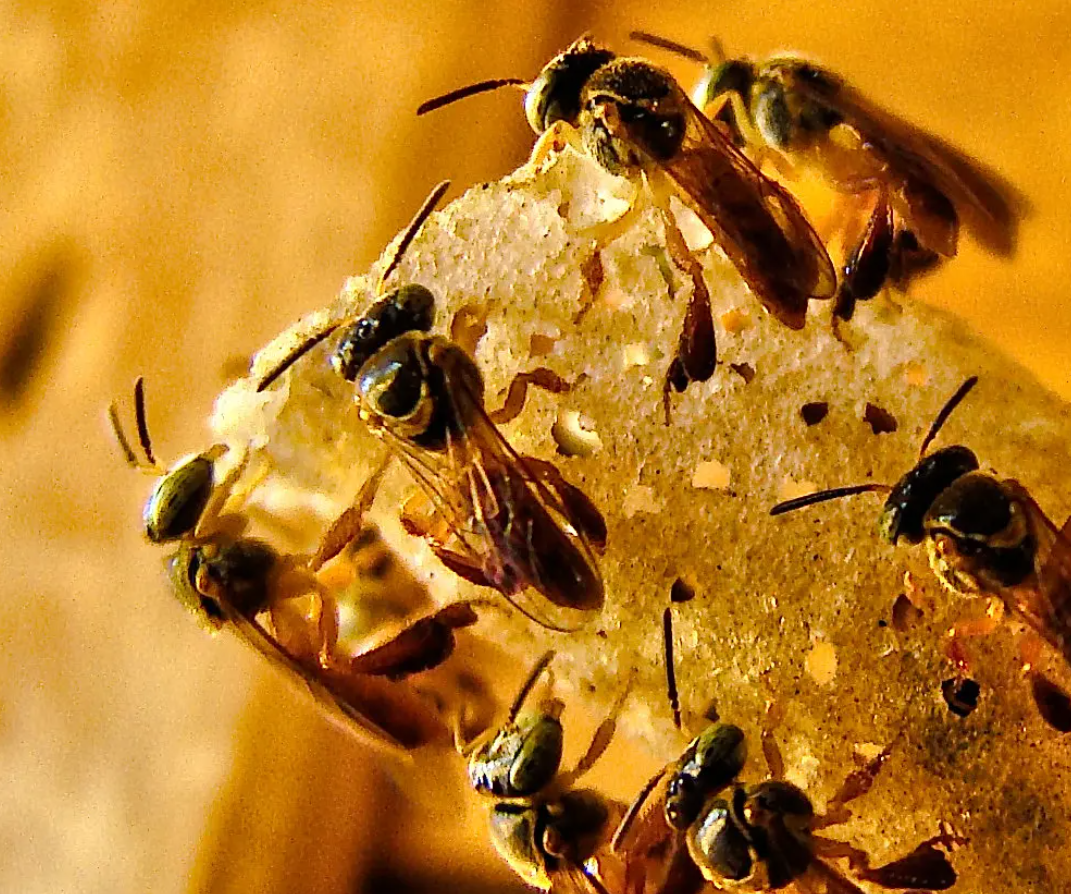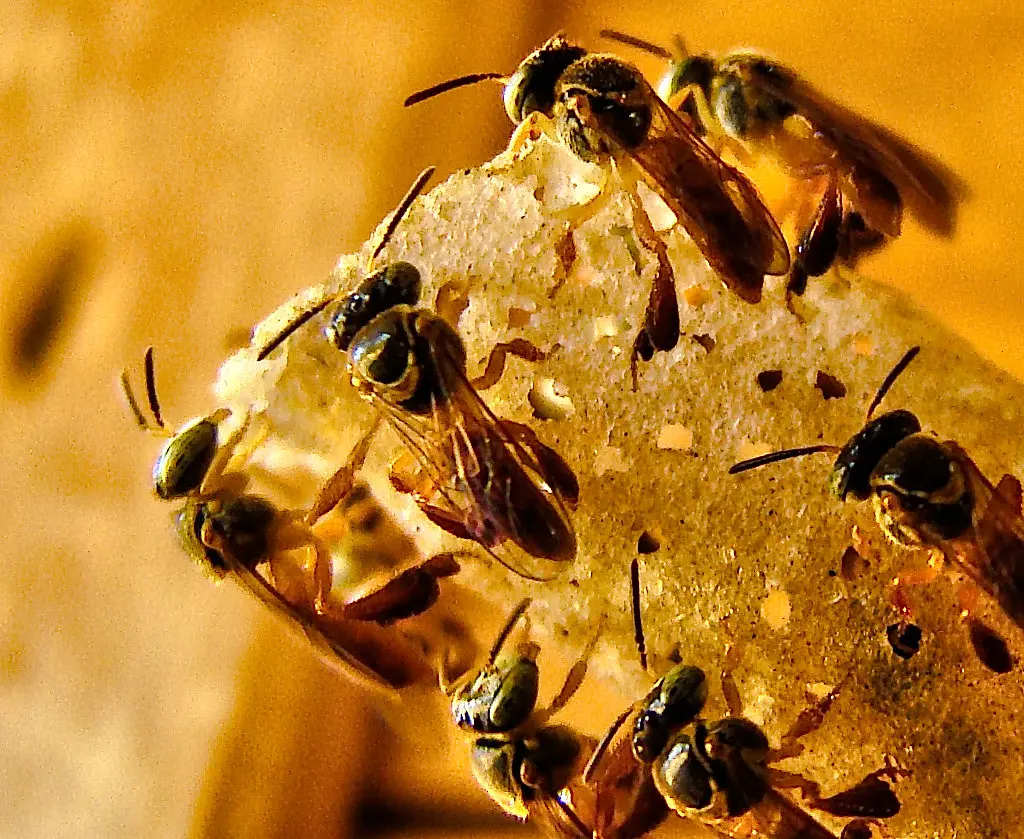
Native vegetation exerts a protective effect against pollutants in forest remnants

by Elton Alisson in Agency FAPESP – The coverage of native vegetation exerts a protective effect against toxic pollutants that reach urban forest remnants, generated by vehicle traffic or industrial activities near these threatened areas.
The finding was made by researchers at the University of São Paulo (USP), Ribeirão Preto campus, in partnership with colleagues from Universidade Estadual Paulista (unesp), Rio Claro campus, and from other institutions, through a study with jataí bees (Tetragonisca angustula) collected in the Cantareira-Mantiqueira Ecological Corridor.
The researchers measured the concentrations of 21 chemical elements accumulated in stingless bee specimens found in eight different landscapes of the environmental protection area composed of forest remnants of the Atlantic Forest, located in the north-northeast of the Metropolitan Region of São Paulo (RMSP).
The analyzes indicated that, the greater the forest cover in the studied landscapes, lower were the concentrations of toxic metals, like mercury, cadmium and chromium, deposited in the bodies of bees.
Study results, supported by FAPESP through four projects (16/14737-3, 16/07661-0, 13/50421-2, 20/01779-5), were published inarticle in the magazineEcotoxicology and Environmental Safety.
"We saw that the native vegetation cover influences the concentrations of these polluting elements accumulated in bees, which are known to be toxic and may endanger biodiversity”, tells the FAPESP AgencyMaria Fernanda Hornos Carneiro, professor at the Pontifical Catholic University of Chile and coordinator of the study. The work began when the researcher was doing a post-doctorate at USP in Ribeirão Preto.
According to Hornos Aries, due to foraging behavior and the existing hairs on the bodies of bees, insects can provide useful information about the quality of the environments in which they live. This because, by flying over different spaces in an environment to pollinate various fruit plants, can carry ultrafine particles of atmospheric aerosols generated by urban pollution. Between them, toxic metals, adsorbed on the particulate material.
For that reason, bees and their products, como mel, pollen, propolis and wax, have been used in environmental risk analysis studies by evaluating the bioaccumulation of metals and metalloids - chemical elements with intermediate properties between metals and non-metals.
In Brazil, for example, studies have already been done using the exotic beeApis mellifera as a bioindicator of environmental quality in different landscapes. However, biomonitoring using native social bees was still scarce.
Based on this finding, the researchers had the idea of verifying whether jataí could be a bioindicator of environmental quality in the Cantareira-Mantiqueira Ecological Corridor, since it plays a key role in that ecosystem, pollinating various fruit plants.
“Jataí is one of dozens of species of stingless bees in the Atlantic Forest. All of them are threatened by human activities that occur around this ecological corridor located very close to São Paulo and, therefore, potentially also exposed to the emission of pollutants generated in the city", says Hornos Carneiro.
Beneficial effect
In order to evaluate the effects of native and modified vegetation cover on the accumulation of toxic metals and metalloids in jataí bees living in the ecological corridor, the researchers collected specimens of the animal from eight landscapes of the ecological corridor through traps or direct searches, with varied vegetation cover gradients and spatial heterogeneity.
the concentration of 21 chemical elements present in bees was determined by inductively coupled plasma mass spectrometry (ICP-MS) - technique that allows detecting metals and various non-metals at very low concentrations.
The results of the analyzes indicated a beneficial effect of forested areas on mercury concentrations, cadmium and chromium in insects.
On the other hand, the analyzes revealed that the average concentration of some toxic elements identified in the insects, like lead, aluminum and arsenic, were higher than those detected in other species of bees collected in urban areas or close to industrial regions located in countries such as Serbia, Netherlands and Italy.
"It caught our attention that the average concentration of these toxic elements in bees collected in the ecological corridor was higher than those detected in regions clearly more environmentally impacted by atmospheric pollution", says Horns Aries.
The road and bare ground that border the ecological corridor have been identified as factors that contribute to the accumulation of inorganic pollutants found in bees.
Read the articleEffects of native forest and human-modified land covers on the accumulation of toxic metals and mettaloids in the tropical bee Tetragonisca angustula (DOI:10.1016/j.ecoenv.2021.112147), by Marcela de Matos Barbosa, Ana Carolina Coelho Fernandes, Rafael Souza Cruz Alves, Denise Araujo Alves, Fernando Barbosa Junior, Bruno Lemos Batista, Milton Cezar Ribeiro and Maria Fernanda Hornos Carneiro.
This text was originally published by Agency FAPESP according to the licença Creative Commons CC-BY-NC-ND. read the original.
Matter extracted from https://www.ecycle.com.br/vegetacao-nativa-exerce-efeito-protetor-contra-poluentes-em-remanescentes-florestais/

Sorry, the comment form is closed at this time.